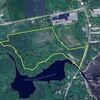Processing Your Payment
Please do not leave this page until complete. This can take a few moments.
- News
-
Editions
-
- Lists
-
Viewpoints
-
Our Events
-
Event Info
- Women's Leadership Forum 2025
- On the Road with Mainebiz in Bethel
- Health Care Forum 2025
- On The Road with Mainebiz in Greenville
- On The Road with Mainebiz in Waterville
- Small Business Forum 2025
- Outstanding Women in Business Reception 2025
- On The Road with Mainebiz in Bath
- 60 Ideas in 60 Minutes Portland 2025
- 40 Under 40 Awards Reception 2025
- On The Road with Mainebiz in Lewiston / Auburn
- 60 Ideas in 60 Minutes Bangor 2025
Award Honorees
- 2025 Business Leaders of the Year
- 2024 Women to Watch Honorees
- 2024 Business Leaders of the Year
- 2023 NextUp: 40 Under 40 Honorees
- 2023 Women to Watch Honorees
- 2023 Business Leaders of the Year
- 2022 NextUp: 40 Under 40 Honorees
- 2022 Women to Watch Honorees
- 2022 Business Leaders of the Year
-
-
Calendar
-
Biz Marketplace
- News
-
Editions
View Digital Editions
Biweekly Issues
- April 21, 2025 Edition
- April 7, 2025
- March 24, 2025
- March 10, 2025
- Feb. 24, 2025
- Feb. 10, 2025
- + More
Special Editions
- Lists
- Viewpoints
-
Our Events
Event Info
- View all Events
- Women's Leadership Forum 2025
- On the Road with Mainebiz in Bethel
- Health Care Forum 2025
- On The Road with Mainebiz in Greenville
- On The Road with Mainebiz in Waterville
- + More
Award Honorees
- 2025 Business Leaders of the Year
- 2024 Women to Watch Honorees
- 2024 Business Leaders of the Year
- 2023 NextUp: 40 Under 40 Honorees
- 2023 Women to Watch Honorees
- 2023 Business Leaders of the Year
- + More
- 2022 NextUp: 40 Under 40 Honorees
- 2022 Women to Watch Honorees
- 2022 Business Leaders of the Year
- Nomination Forms
- Calendar
- Biz Marketplace
February 5, 2007
Look behind, look ahead | MEREDA's review of the 2006 real estate market, and a preview of what's to come
By Taylor Smith
After what seemed like an absence of good news in Maine's real estate market last year, lowered expectations were the accessory of choice at the recent Maine Real Estate & Development Association's annual conference, held at the Holiday Inn by the Bay in Portland on January 25.
But as a slate of presenters from the commercial, industrial, retail and residential real estate markets made clear to the audience of 500, the market isn't nearly as bad as it seems. Sure, the residential market has taken some lumps during the last year, but try telling a commercial developer battling fast-rising land prices in the Portland area that it's a buyer's market. Here are some highlights from the conference:
Industrial
The speculative wave that petered out in the residential market last year also faded in the industrial market. And that wasn't surprising, said Michael Miller, a broker with NAI The Dunham Group in Portland, especially considering rising interest rates and higher costs for new construction. As a result, redeveloping existing industrial space was a popular option last year. "It's much quicker and much more cost effective to buy and retrofit than to build new," he said.
Still, that doesn't mean the industrial market as a whole is cooling off. Miller said prices for industrial properties rose roughly 20% during the past year ˆ a "pretty impressive number," he noted. And thanks to the lack of developable property in greater Portland, Miller said, land prices rose roughly 25%. In the Portland area, that meant spending $100,000-$200,000 per acre.
While Miller forecasts plenty of opportunity in the industrial market in 2007, he cautions that regulatory pressures and other factors will make it more difficult for new construction in congested areas like greater Portland. As a result, more buyers will look to purchase existing industrial space. Meanwhile, he also expects an improving economic environment will help slow Maine's manufacturing exodus, resulting in more stability in the industrial market.
Commercial
The commercial action moved to the suburbs last year. In suburban Portland, overall vacancy dropped 3.5 percentage points to 3.69%, according to James Harnden of Ram Harnden Commercial Real Estate Services in Portland. Harnden also noted that of the nearly 151,000 sq. ft. of new office space in greater Portland, all of the renovation and new construction was in the suburban market.
Rental rate increases also hovered around the national average of 4.3%. Greater Portland landlords increased rates between four percent and five percent for Class A properties, and two percent to seven percent for Class B space. But the Portland area also enjoyed a much lower vacancy rate than the national average, which Harnden estimated at roughly 13% for 2006. By comparison, greater Portland's overall vacancy rates hovered around 5.15% last year.
Harnden also refuted the notion that this is a buyer's market, noting that absorption rates in the commercial market have remained strong even as more properties come into the market. "What we've got, in my opinion, is a balanced market," he said.
Among the highlights of Harnden's 2007 forecast for the greater Portland office market is that 80,000 sq. ft. of pre-leased and purchased office space will be completed ˆ the first downtown commercial construction in two years. Harnden also expects overall vacancies to stay relatively flat and rental rates to increase slightly in 2007.
Retail
The buzzword in the retail real estate market last year was "big-box". From the new Kohl's at The Marketplace at Augusta to the Lowe's at Biddeford Crossing and Westbrook's Pine Tree Shopping Center, Maine's retail landscape was dominated by big, national retailers setting up shop.
The total amount of retail space in the greater Portland market increased nearly 10% to just over five million sq. ft., according to Steve Baumann of CB Richard Ellis/The Boulos Co. in Portland. That was a big jump, considering the one-percent uptick between 2004 and 2005. Meanwhile, vacancy rates remained relatively low at three percent, though those rates have trended up slightly over the last two years.
Baumann says the retail trends for 2007 will be influenced by high prices and scarce availability for land in some parts of Maine. As a result, he expects to see smaller shopping centers clustered together instead of large, enclosed shopping malls. One example is the 1.3 million-square-foot Marketplace at Augusta development, which is an open-air retail development.
Residential
Anne Weigel of Coldwell Banker Residential Brokerage in Portland blames the residential real estate downturn on increased apprehension on the part of buyers ˆ particularly after newspapers blared headlines like, "Maine home sales drop by double digits." As a result, fewer houses sold, and that excess inventory caused prices to stagnate, said Weigel.
Even so, prices for single-family homes didn't drop into the red. The 2006 median sale price actually rose 0.8% over 2005, to $192,519, according to Maine Real Estate Information System Inc. Sales prices varied widely by location: The median price in Falmouth, for example, rose 11.1% last year, but fell 13.4% in Biddeford, said Weigel.
And while 2006 was an abrupt change in direction after years of strong growth in the residential real estate market, Weigel takes a relatively sunny view for the market in the coming year. Thanks in part to a shrinking gap between listings and sales, Weigel expects the current downturn to bottom out early in 2007, with prices slowly rebounding later this year and more strongly in 2008.
But as a slate of presenters from the commercial, industrial, retail and residential real estate markets made clear to the audience of 500, the market isn't nearly as bad as it seems. Sure, the residential market has taken some lumps during the last year, but try telling a commercial developer battling fast-rising land prices in the Portland area that it's a buyer's market. Here are some highlights from the conference:
Industrial
The speculative wave that petered out in the residential market last year also faded in the industrial market. And that wasn't surprising, said Michael Miller, a broker with NAI The Dunham Group in Portland, especially considering rising interest rates and higher costs for new construction. As a result, redeveloping existing industrial space was a popular option last year. "It's much quicker and much more cost effective to buy and retrofit than to build new," he said.
Still, that doesn't mean the industrial market as a whole is cooling off. Miller said prices for industrial properties rose roughly 20% during the past year ˆ a "pretty impressive number," he noted. And thanks to the lack of developable property in greater Portland, Miller said, land prices rose roughly 25%. In the Portland area, that meant spending $100,000-$200,000 per acre.
While Miller forecasts plenty of opportunity in the industrial market in 2007, he cautions that regulatory pressures and other factors will make it more difficult for new construction in congested areas like greater Portland. As a result, more buyers will look to purchase existing industrial space. Meanwhile, he also expects an improving economic environment will help slow Maine's manufacturing exodus, resulting in more stability in the industrial market.
Commercial
The commercial action moved to the suburbs last year. In suburban Portland, overall vacancy dropped 3.5 percentage points to 3.69%, according to James Harnden of Ram Harnden Commercial Real Estate Services in Portland. Harnden also noted that of the nearly 151,000 sq. ft. of new office space in greater Portland, all of the renovation and new construction was in the suburban market.
Rental rate increases also hovered around the national average of 4.3%. Greater Portland landlords increased rates between four percent and five percent for Class A properties, and two percent to seven percent for Class B space. But the Portland area also enjoyed a much lower vacancy rate than the national average, which Harnden estimated at roughly 13% for 2006. By comparison, greater Portland's overall vacancy rates hovered around 5.15% last year.
Harnden also refuted the notion that this is a buyer's market, noting that absorption rates in the commercial market have remained strong even as more properties come into the market. "What we've got, in my opinion, is a balanced market," he said.
Among the highlights of Harnden's 2007 forecast for the greater Portland office market is that 80,000 sq. ft. of pre-leased and purchased office space will be completed ˆ the first downtown commercial construction in two years. Harnden also expects overall vacancies to stay relatively flat and rental rates to increase slightly in 2007.
Retail
The buzzword in the retail real estate market last year was "big-box". From the new Kohl's at The Marketplace at Augusta to the Lowe's at Biddeford Crossing and Westbrook's Pine Tree Shopping Center, Maine's retail landscape was dominated by big, national retailers setting up shop.
The total amount of retail space in the greater Portland market increased nearly 10% to just over five million sq. ft., according to Steve Baumann of CB Richard Ellis/The Boulos Co. in Portland. That was a big jump, considering the one-percent uptick between 2004 and 2005. Meanwhile, vacancy rates remained relatively low at three percent, though those rates have trended up slightly over the last two years.
Baumann says the retail trends for 2007 will be influenced by high prices and scarce availability for land in some parts of Maine. As a result, he expects to see smaller shopping centers clustered together instead of large, enclosed shopping malls. One example is the 1.3 million-square-foot Marketplace at Augusta development, which is an open-air retail development.
Residential
Anne Weigel of Coldwell Banker Residential Brokerage in Portland blames the residential real estate downturn on increased apprehension on the part of buyers ˆ particularly after newspapers blared headlines like, "Maine home sales drop by double digits." As a result, fewer houses sold, and that excess inventory caused prices to stagnate, said Weigel.
Even so, prices for single-family homes didn't drop into the red. The 2006 median sale price actually rose 0.8% over 2005, to $192,519, according to Maine Real Estate Information System Inc. Sales prices varied widely by location: The median price in Falmouth, for example, rose 11.1% last year, but fell 13.4% in Biddeford, said Weigel.
And while 2006 was an abrupt change in direction after years of strong growth in the residential real estate market, Weigel takes a relatively sunny view for the market in the coming year. Thanks in part to a shrinking gap between listings and sales, Weigel expects the current downturn to bottom out early in 2007, with prices slowly rebounding later this year and more strongly in 2008.









Comments